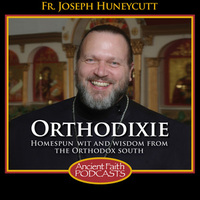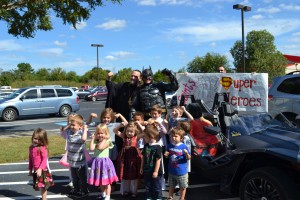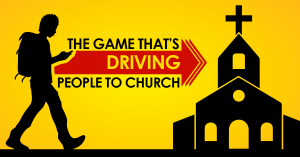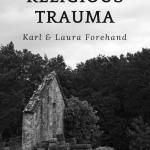 May 13th, 1981, I was a college sophomore and “running the board” at the local radio station, WATA, in Boone, North Carolina. In those days, back before PCs & Internet, the news came to the Media over the AP Wire (or Reuters, UPI, etc). This was a black box, about the size of your CPU, which noisily, clumsily, and continuously spat out paper (news, sports, entertainment, stocks, etc). There was a bell on the machine which would ring if there was a BIG story (e.g., the end of the world). That day, the bell rang. At first I didn’t know what was going on. I ran in and ripped away the copy. The pope, John Paul II, had been shot. I forget what programming was running at the time but, per protocol, I interrupted the show to read the news of the shooting. Afterwards another bell, the phone, rang all day.
May 13th, 1981, I was a college sophomore and “running the board” at the local radio station, WATA, in Boone, North Carolina. In those days, back before PCs & Internet, the news came to the Media over the AP Wire (or Reuters, UPI, etc). This was a black box, about the size of your CPU, which noisily, clumsily, and continuously spat out paper (news, sports, entertainment, stocks, etc). There was a bell on the machine which would ring if there was a BIG story (e.g., the end of the world). That day, the bell rang. At first I didn’t know what was going on. I ran in and ripped away the copy. The pope, John Paul II, had been shot. I forget what programming was running at the time but, per protocol, I interrupted the show to read the news of the shooting. Afterwards another bell, the phone, rang all day.
Many, many things have happened since those bells and the ones heard this past Saturday. Yet, except for the one that follows, that’s my only real Pope Story.
April 2nd, 2005, at the end of Vespers, I announced to the gathered faithful that I was going with my family into Asheville, to the Basilica of St Lawrence Deacon & Martyr, to say a prayer for that Communion and for the repose of John Paul’s soul. I stated that I was not doing this in any official capacity, but felt I needed to. In addition to the five Huneycutts, two others also went. As the following day, the Third Sunday of Lent, was the Sunday of the Adoration of the Holy Cross, we had Carnations available for the Feast. I knew we had a few more than necessary, so I took one and placed it on a side altar at the basilica, stood silently in prayer for a few minutes, and left.
No, I’m not an ecumenist “rushing to embrace”. And I know I risk the ire and commentary of my brethren who have stronger views. But Pope John Paul II was a good man. May God rest his soul in peace, aid the Roman Catholic flock with a God-pleasing successor, allow us to the see the day when the Schism will cease — and grant you and yours long life.
From the Antiochian Archdiocese:
We join in mourning the loss of Pope John Paul II, the great leader of the Roman Catholic Church. At the same time we rejoice in his ministry, and the legacy of compassion that he leaves to the world. We bring to mind the teaching of St. Ignatius of Antioch in his exhortation to Polycarp, the Bishop of Smyrna on the role of the bishop:
Lift up all men, as the Lord lifts you; put up with all in love, as you actually do. Be diligent in unceasing prayers; ask for more understanding than you have; watch with a sleepless spirit. Speak to each individual after the example of God; bear the sickness of all, as a perfect athlete. Where the labor is greatest, the gain is great.(Ignatius to Polycarp 1:2-3)
It seems clear that Pope John Paul II, in his episcopacy, was true to this teaching. He touched many people of all races and religions by his example of caring, love, and compassion. He also served as a strong example of what it means to suffer and die with grace. He has “fought the good fight” (2 Timothy 4:7)
His Eminence Metropolitan PHILIP had met Pope John Paul II on two occasions and was impressed by his faithfulness, and holiness. Surely his soul is resting in peace and his memory is eternal.
From the Orthodox Church in America:
SYOSSET, NY [OCA Communications] On Saturday, April 2, 2005, His Beatitude, Metropolitan Herman, Primate of the Orthodox Church in America, sent letters of condolence to Angelo Cardinal Sodano, Vatican Secretary of State, and Walter Cardinal Kasper of the Pontifical Council for Promoting Christian Unity, upon learning of the death of Pope John Paul II.
“I greet you with brotherly love in Christ and extend the condolences of the Holy Synod of Bishops, Hierarchs, Clergy, Monastics, and Faithful of the Orthodox Church in America,” Metropolitan Herman wrote. “Throughout the many years of his service as spiritual leader of the Roman Catholic Church, he was a shining example of dedication to the episcopal ministry and to the high office to which he was called and a ‘good steward of the manifold grace of God’ [1 Peter 4:10].”
Metropolitan Herman also noted that, in word and deed, the late Pope “constantly reminded all humanity of our shared responsibility to defend the rights of the poor, the defenseless, and those who have no one to speak for them” and remained steadfast “in proclaiming the ‘Gospel of Life’ and in safeguarding the dignity and sanctity of life in all its stages.
“This, perhaps, will be his greatest legacy, not only to the faithful of the Roman Catholic Church, but also for all Christians and all people of good will,” the letter of condolence concluded.
Earlier in the week, upon learning of the Pope’s failing health, Metropolitan Herman sent a letter of concern to Cardinal Kasper.
During his lengthy pontificate, Pope John Paul II met with several hierarchs of the Orthodox Church in America in the Vatican and during his visits to North America.
From the Greek Archdiocese:
We participate in the sorrow of the Roman Catholic Church during this difficult time of the departure of Pope John Paul II, and we join the world in offering prayers knowing that he is now in the world of eternal rest.
The Pope, who began his papacy in October 1978, has guided the Roman Catholic Church through transforming years, remaining firm on traditional values while offering love, compassion, and forgiveness. He touched many people with his gentle manner and his openness to people of other religions.
During the tenure of Pope John Paul II, the relationship between the Roman Catholic Church and the Orthodox Church has improved significantly. In a most recent relevant event last November, Archbishop Demetrios, spiritual leader of 1.5 million Greek Orthodox Christians in America, had the opportunity to visit and be with the Pope in a special occasion at The Vatican. This was a ceremony during which the Pope, responding to the request of Ecumenical Patriarch Bartholomew, returned the Holy Relics of Saint John Chrysostom and Saint Gregory the Theologian, two of the most prominent Fathers of the undivided Church. The Holy Relics now rest at the Ecumenical Patriarchate in Constantinople.
We, as Orthodox Christians, will always remember, among other instances, this expression of a desire for reconciliation and unity as we pray for the repose of his soul.











